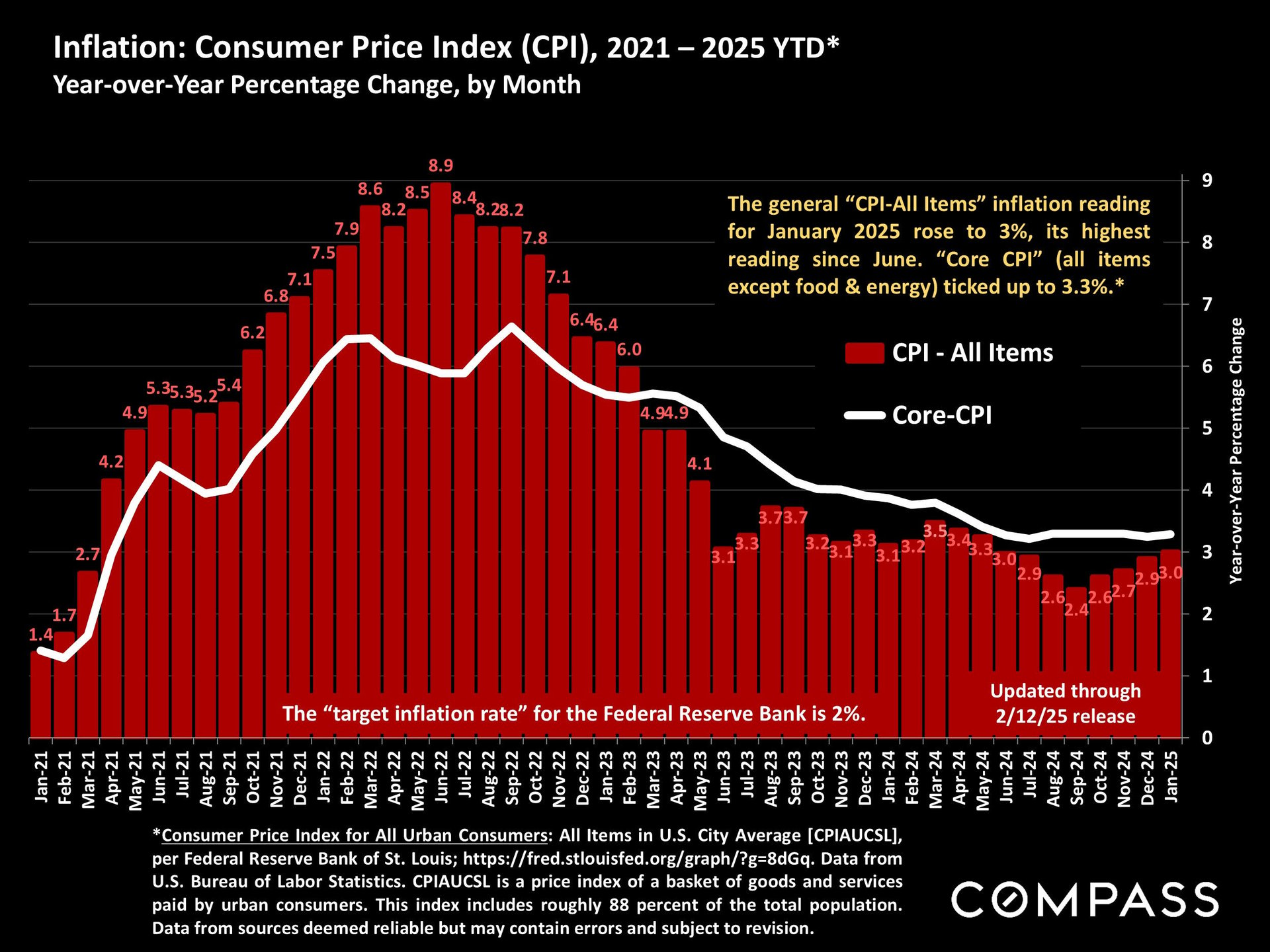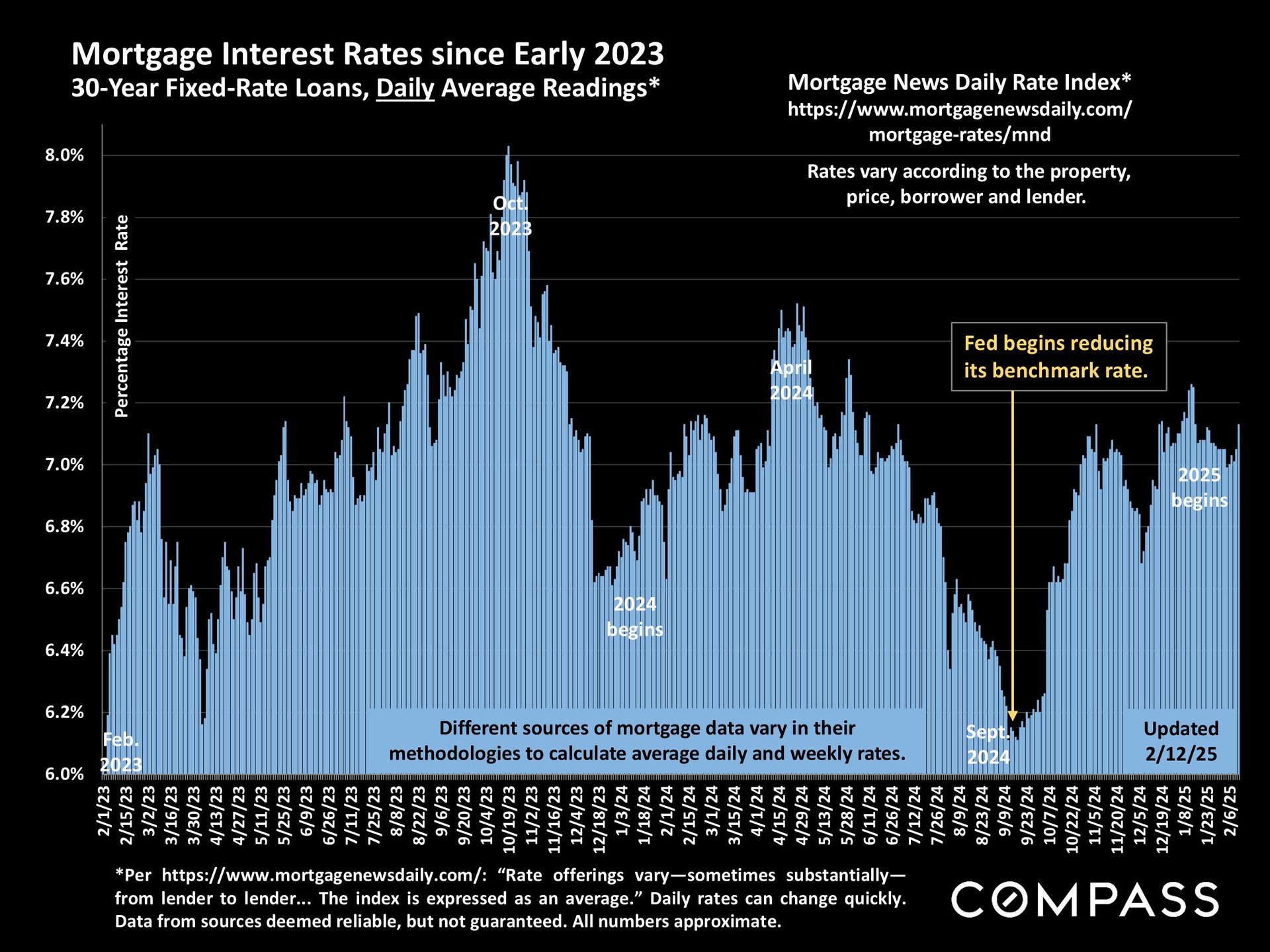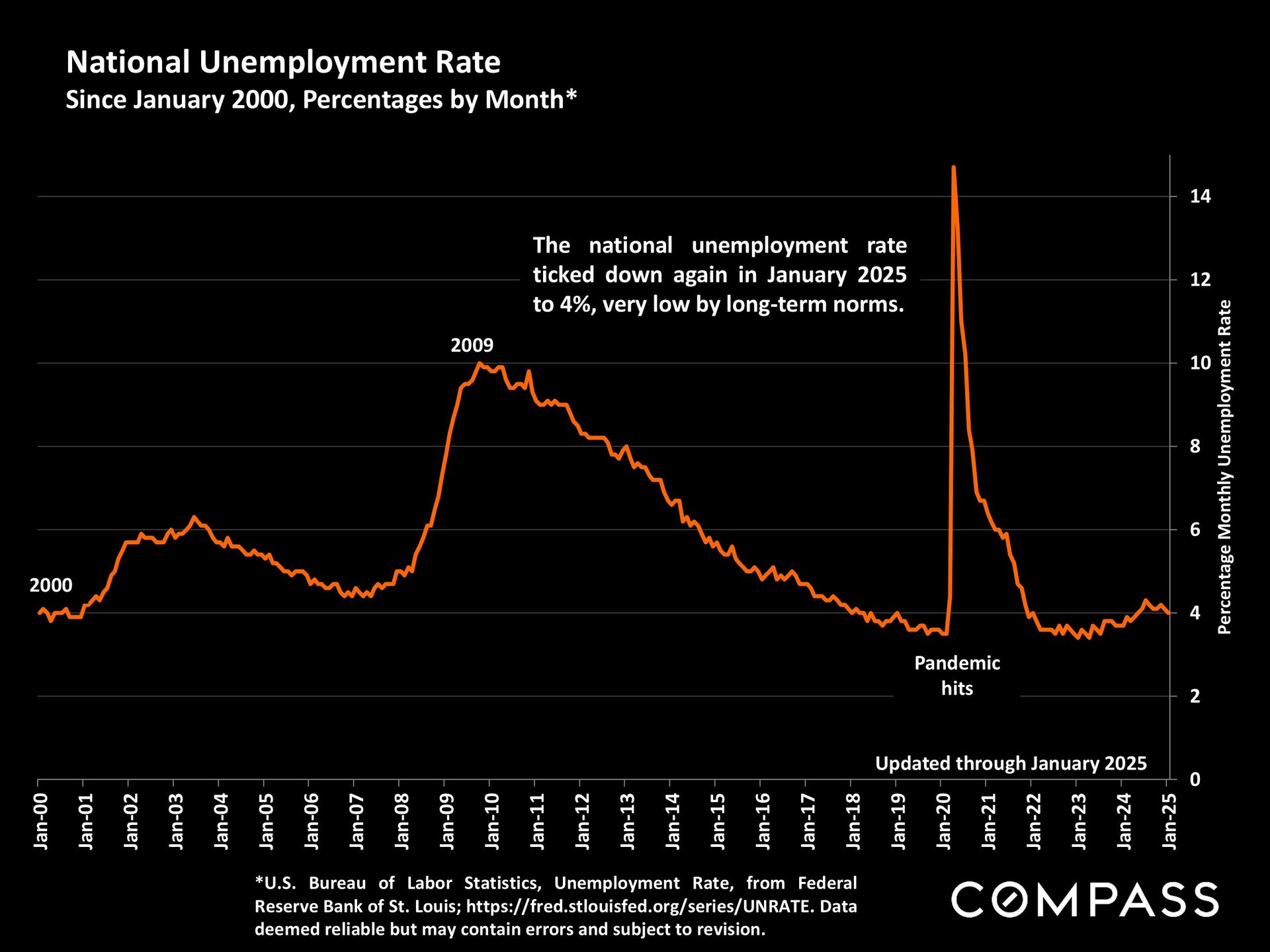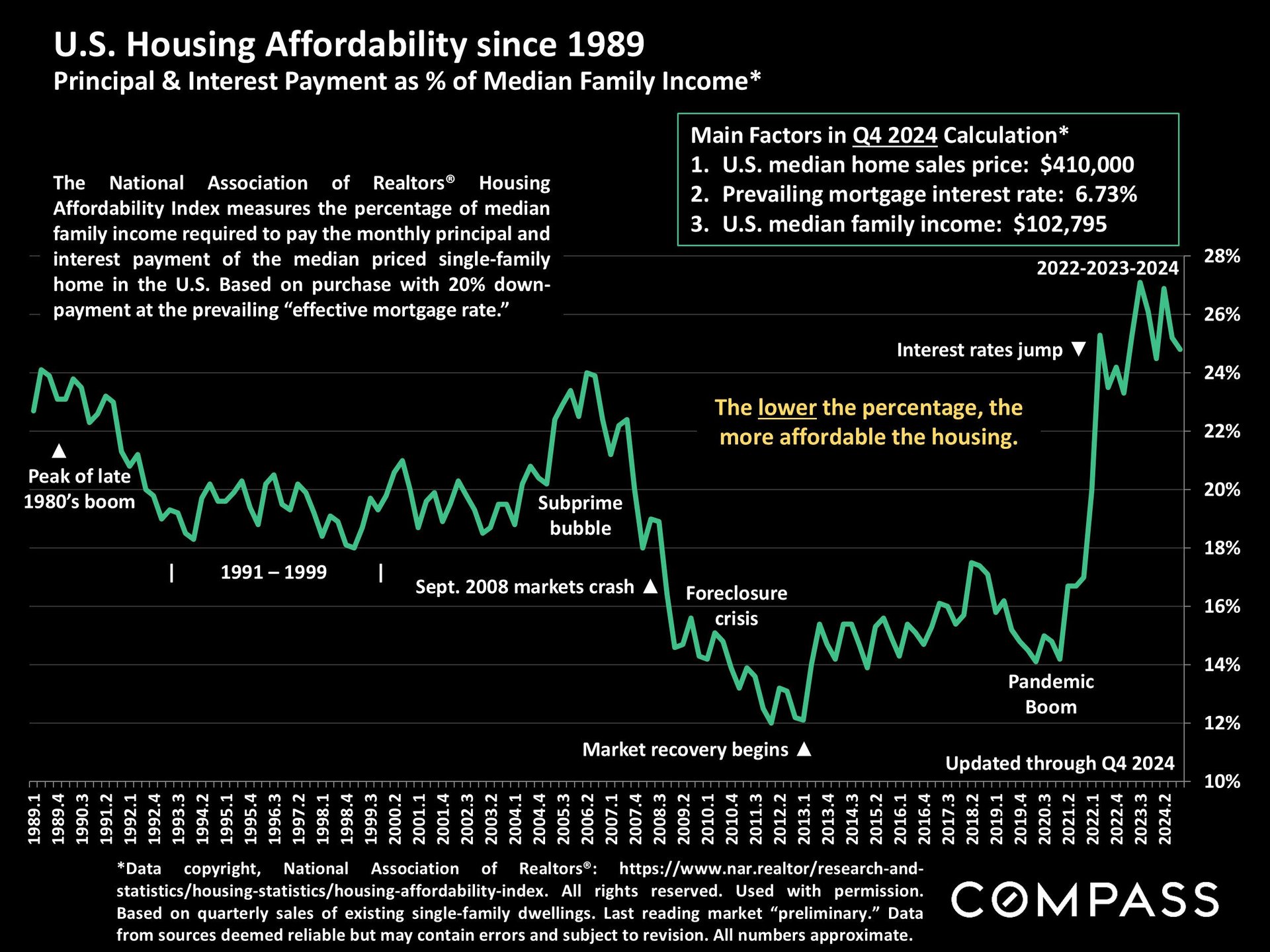Economic Overview
The U.S. economy is facing a mix of challenges and resilience, with inflation, interest rates, job growth, and housing affordability all playing significant roles. As of February 13, 2024, inflation has risen again, reaching its highest level since June 2023. This has led to higher interest rates, making borrowing more expensive. At the same time, consumer confidence is dropping, job growth is slowing, and home prices continue to climb, making affordability a growing concern.
Inflation and Its Impact
Inflation increased again in January, marking the highest level in six months. Federal Reserve Chair Jerome Powell has made it clear that the Fed will not rush to cut interest rates while inflation remains high. Many experts worry that new trade tariffs could push prices even higher, though the president argues that they won’t. Despite inflation concerns, the president continues to call for interest rate cuts to boost economic growth.
Rising Interest Rates and Mortgage Costs
Following the latest inflation report, interest rates have gone up. The Federal Reserve has kept its benchmark rate high, and there are no signs of immediate cuts.
Higher interest rates make borrowing more expensive for homebuyers and businesses. Mortgage costs have risen, making it harder for people to afford homes. Businesses, too, are feeling the impact as they adjust to pricier loans, which could slow down investments and expansion. The Freddie Mac weekly mortgage rate update will provide more insight into where rates are heading.
Job Market: Strong but Uncertain
The U.S. added jobs in January, but the numbers were slightly below expectations. The unemployment rate, however, dipped to 4%, showing continued strength in the labor market.
There is debate over whether a strong job market is good or bad for the economy. On one hand, more jobs mean more consumer spending. On the other, it makes it harder for the Federal Reserve to justify lowering interest rates. Meanwhile, the federal government’s push to reduce its workforce could lead to job losses in both public and private sectors, potentially impacting consumer confidence and economic stability.
Stock Market Recovery and Wealth Distribution
After a sudden drop earlier in the year, stock markets have bounced back and remain strong. This recovery has boosted household wealth, particularly for wealthier individuals with significant investments.
However, stock market gains have not been evenly distributed. Affluent households have benefited the most, while middle- and lower-income households continue to struggle with rising living costs and slow wage growth. This growing wealth gap remains a key concern.
Housing Market: Prices Keep Climbing
Nearly 90% of metro areas saw home prices increase in the last year, according to the National Association of Realtors. A major reason for this is the ongoing shortage of homes for sale. With more buyers than available properties, prices continue to rise.
The government’s metro-area housing data includes multiple counties, making it important for buyers to focus on local trends within specific cities and neighborhoods.
Housing Affordability Struggles
Housing affordability remains at its worst levels in decades. Over the last three years, homes have been more expensive relative to income than at any time since 1989.
In past housing crises, such as the late 1980s and the 2008 financial crash, extreme unaffordability was followed by economic downturns. However, most economists do not currently predict a recession, despite ongoing affordability concerns.
The Price of Gas: A Volatile Factor
Gas prices have fluctuated widely since 2000, often spiking due to global events and supply chain disruptions. The energy market remains highly sensitive to economic and geopolitical changes, and recent tensions could lead to further price increases in the coming months..
Conclusion: What Lies Ahead?
The economy is at a crossroads, with inflation, interest rates, and affordability challenges shaping financial decisions. While stock market gains have helped some, rising costs and falling consumer confidence create uncertainty for many. The next few months will be crucial in determining whether inflation slows, interest rates stabilize, and economic confidence improves.







